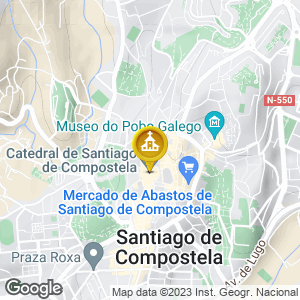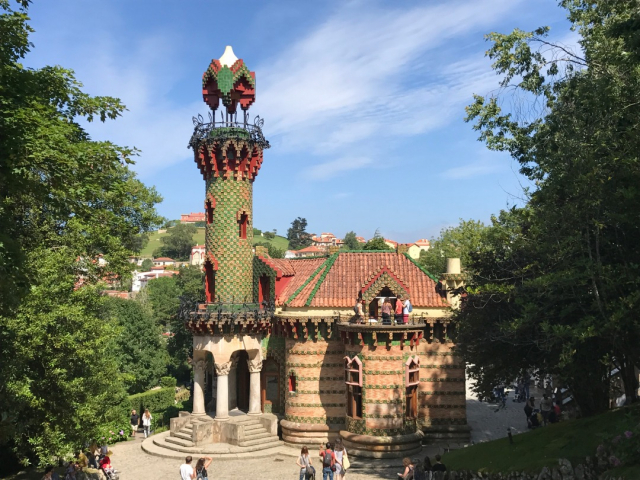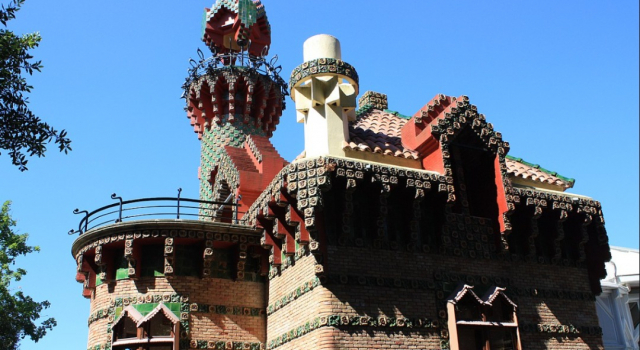El Capricho de Gaudí
El Capricho stands out for its oriental style and for the finishes that have defined Gaudí.
About 55 kilometers from Santander is Comillas, a municipality that borders the Cantabrian Sea to the north and is crossed every year by thousands of pilgrims in their search for the land of Santiago de Compostela on the Camino de Santiago. The town is distinguished by a large number of baroque and medieval buildings, but also for being one of the few places outside Catalonia where modernist artists such as Gaudí have intervened.
The Villa Quijano, more commonly known as El Capricho, besides being a unique building in terms of architecture, is also a monument of great international relevance. It is one of the first buildings of oriental taste designed by Antoni Gaudí under the direction of the Spanish architect Cristóbal Cascante Colom. It was built between 1883 and 1885 by order of Máximo Díaz de Quijano, resulting in an exceptional work of great cultural interest.
El Capricho de Gaudí in Comillas stands out for being an oriental style building inspired by the artistic currents of the Near and Far East, as well as Mudejar and Nasrid art. The monument is defined by an elongated floor plan with three levels and a cylindrical tower in the shape of a Persian minaret. However, one of the most striking features of this great architectural work is the use of decoration and finishes that have so defined the greatest representative of Catalan modernism.
Gaudí clad Villa Quijano with ceramic tiles, brick and tile, materials that offer as a result a very distinctive and striking chromatic variety. At first glance the colors that stand out the most are carriage green and different shades of red, all thanks to the capitals decorated with birds and palm leaves.
With Gaudí at the head and commissioned by Máximo Díaz de Quijano, we are talking about one of the few works that the artist took outside Catalonia. In it we can find the most oriental stage of Gaudí, with clear tints of styles such as Japanese, Indian or Persian; also leaving evidence of Islamic art. A sample of this can be found in the arches, cartouches or finials, as well as ceramic tiles that star in the building.
Unfortunately and in spite of its spectacular nature, the building was abandoned after the Civil War. Although in 1969 it was declared an Asset of Cultural Interest, it was not until 1977 that the last descendant of the Díaz de Quijano family decided to sell it. The buyer, Antonio Díaz, would be in charge of restoring it a decade later.
Since then the building has been put to various uses. After restoration by the new owner, it would become an imposing restaurant. Shortly thereafter, in 1992, the Japanese company Mido Development took over Capricho de Gaudí. It would not be until 2009 when the building would become, until today, a museum.
Translated with www.DeepL.com/Translator (free version)
20°
27/07/2024
few clouds

Routes
Blog
 How to get to Sarria to do the Camino de Santiago
How to get to Sarria to do the Camino de Santiago
 Descubre la magia del Camino de Santiago Portugués por la costa
Descubre la magia del Camino de Santiago Portugués por la costa
 5 tours culturales que puedes hacer en Galicia si decides hacer un alto en el camino
5 tours culturales que puedes hacer en Galicia si decides hacer un alto en el camino
 Doing the Camino de Santiago in June: What you should know?
Doing the Camino de Santiago in June: What you should know?
Information
Points of interest
Cities & Towns | Hostels | Lodgings | Restaurants | Saddlery | Doctors | Points of interest | Bikes workshop
Contact us | Privacy policy | Cookies policy | | Terms of use | Authorship | Web Map | Consentimiento
© Copyright LA VOZ DE GALICIA S.A. Polígono de Sabón, Arteixo, A CORUÑA (ESPAÑA) Inscrita en el Registro Mercantil de A Coruña en el Tomo 2438 del Archivo, Sección General, a los folios 91 y siguientes, hoja C-2141. CIF: A-15000649
Developed and managed byHyliacom


 Redacción
Redacción